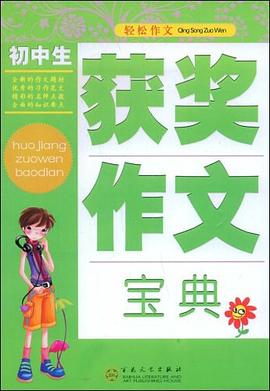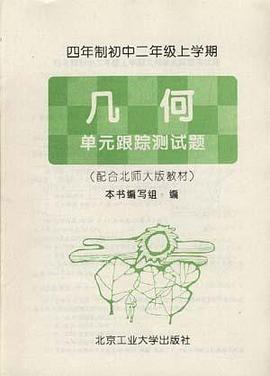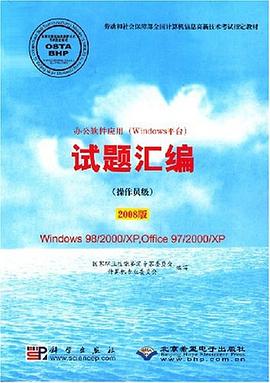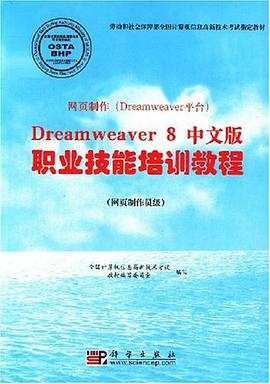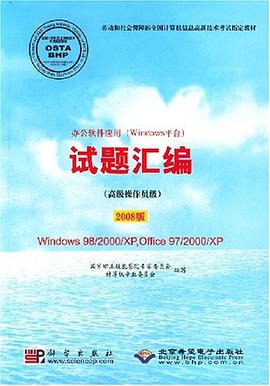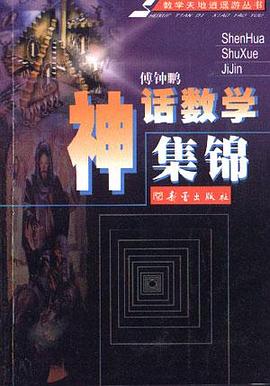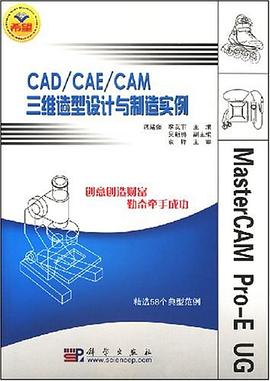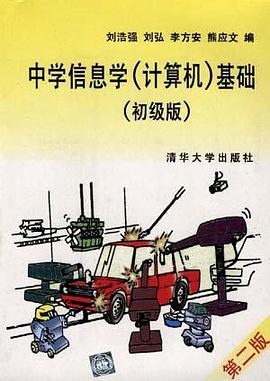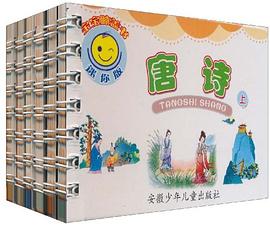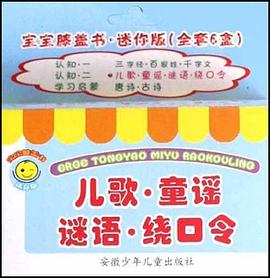

具体描述
本书分为三大部分:句子结构、动词和词类,每部分有7―8个单元不等。编写以1999年《大学英语教学大纲》以及大纲对英语四六级的要求为根据,针对大学学生实际问题,突出应用性和实用性。每单元第一部分(A)是与本单元知识有关的一组练习,第二部分(B)根据第一部分练习进行精当的语法解释,第三部分(C)则安排了更多的专项练习或综合练习。个别单元根据实际需要仅给出(B)部分或(C)部分。本书开始是综合自测题(Test Yourself),目的是让学生了解自己的语法水平,发现尚存的问题,以便能有针对性地使用本书。书末还附有两套语法全面测试题及其答案。
作者简介
目录信息
综合自测题(Test Yourself)
Unit One基本句子结构(Basic Sentence Structures)
1.1 常见的句型
1.2 疑问句
1.3 What…like, What time, What sort等疑问句型的用法
1.4 否定句
l.5 There be句型
1.6 It开头的句子
l.7 It,What开头的强调句
Unit Two 从句(Clauses)
2.1 Who,which和 that引导的从句
2.2 省去关系代词的从句
2.3 what,whose引导的从句
2.4 whoever, no matter who, etc.引导的从句
2. 5 其它
Unit Three 主谓一致(Subject-Verb Agreement)
3.1 主谓语单复数的一致
3.2 主语为不定代词时
3.3 主语有特殊意义时
3.4 复合主语
Unit Four 间接引语(Indirect Speech)
4.1 变化――“here”and“now”
4.2 现在时态、疑问句、不定式的间接引语
Unit Five if, unless, in case结构
5.l if的普通时态和特殊时态用法
5. 2 if I go和 if I went的区别
5. 3 if I were及其虚拟语气
5. 4 unless
5. 5 in case
5. 6 It’s time, would rather结构
5. 7 wish, If only结构
Unit Six 省略(Ellipsis)
6.l 同一上下文中相同句子成分的省略
6.2 使用so和do的省略
6.3介词的省略
6.4 状语从句中的省略
Unit Seven 倒装和强调(Inversion and Emphasis)
7.1 倒装
7.2 强调
Unit Eight 标点符号和分隔(Punctuation and Separation)
8.1 系列分隔
8.2 复合句中的分隔
8. 3 同位语
Unit Nine 并列结构及插人语(Parallel Structure and Parenthetical Expressions)
9.1 并列结构
9.2 对称的并列结构
9.3 插入语
Unit Ten 动词时态(Verb Tenses)
10.l 一般现在时和现在进行时
10.2 一般过去时和过去进行时
10.3 现在完成时
10.4 现在完成进行时
10.5 过去完成时
10.6 过去完成进行时
10.7 将来时的表示方法
10.8 不可用于进行时的动词
10.9 动词时态呼应
Unit Eleven 被动语态(Passive Voice)
11.1 被动语态的构成
11.2 被动语态的使用范围
11.3 短语动词的被动语态
11.4 非谓语动词的被动语态
11. 5“get(got)十过去分词”构成被动语态
11.6 被动语态的转换
11.7 被动语态的特殊情况
11.8 被动语态中介词 by,With的比较
Unit Twelve 虚拟语气(Subjunctive Mood)
Unit Thirteen 情态动词(Modal Verbs)
13.1 表示能力: can, could
13.2表示许可:can,could,may,might
13.3 表示可能性:can,could,may,might,must
13.4 表示推测: ShOUld, ought to,will
13.5表示责任和必要性: have to, must, need
13.6表示责任和劝告: Should ,ought to
13.7表示建议:shall,can,could,may,might
13. 8 表示许诺和意愿: shall,will,would
13.9表示勇敢:dare
13.10表示习惯: used to, would
13.11情态动词的时态问题
Unit Fourteen非谓语动词(Verbals)
14.1不定式
14.2动名词
14.3分词(现在分词和过去分词)
Unit Fifteen感官动词和使役动词(Sense Verb and Causative Verb)
15.1感官感觉动词:see,hear,feel,smell,taste,notice,watch,
find, observe等
15.2使役动词:make,let,have,get,help等
Unit Sixteen容易混淆的动词
16.l形状相似的动词间的区别
16.2意思相近的动词间的区别
Unit Seventeen短语动词(Phrasal Verbs)
Unit Eighteen名词(Nouns)
18. 1可数名词和不可数名词
18.2名词的复数
18.3单位词
18.4名词的属格
Unit Nineteen代词(Pronouns)
19.1人称代词
19.2物主代词
19.3反身代词
19.4疑问代词
19.5不定代词
Unit Twenty限定词(Determiners)
20.1概说
20 .2冠词
20. 3 some, any, no
20.4 another,other
20. 5 all, every, each
2O.6 both,either ,neither
Unit Twenty-one形容词和副词(AdjectiVes and Adverbs)
21.1形容词
21.2副词
Unit Twenty-two连词(Conjunctions)
22.1连词的分类
22.2连词的用法
Unit Twenty-three介词(Prepositions)
23.1介词的种类
23.2介词短语的句法功能
23.3几组容易混淆的介词比较
23.4介词与其它词类的搭配
语法全面测试题(General Structure Exercises for Standard Written English)
参考书目
· · · · · · (收起)
Unit One基本句子结构(Basic Sentence Structures)
1.1 常见的句型
1.2 疑问句
1.3 What…like, What time, What sort等疑问句型的用法
1.4 否定句
l.5 There be句型
1.6 It开头的句子
l.7 It,What开头的强调句
Unit Two 从句(Clauses)
2.1 Who,which和 that引导的从句
2.2 省去关系代词的从句
2.3 what,whose引导的从句
2.4 whoever, no matter who, etc.引导的从句
2. 5 其它
Unit Three 主谓一致(Subject-Verb Agreement)
3.1 主谓语单复数的一致
3.2 主语为不定代词时
3.3 主语有特殊意义时
3.4 复合主语
Unit Four 间接引语(Indirect Speech)
4.1 变化――“here”and“now”
4.2 现在时态、疑问句、不定式的间接引语
Unit Five if, unless, in case结构
5.l if的普通时态和特殊时态用法
5. 2 if I go和 if I went的区别
5. 3 if I were及其虚拟语气
5. 4 unless
5. 5 in case
5. 6 It’s time, would rather结构
5. 7 wish, If only结构
Unit Six 省略(Ellipsis)
6.l 同一上下文中相同句子成分的省略
6.2 使用so和do的省略
6.3介词的省略
6.4 状语从句中的省略
Unit Seven 倒装和强调(Inversion and Emphasis)
7.1 倒装
7.2 强调
Unit Eight 标点符号和分隔(Punctuation and Separation)
8.1 系列分隔
8.2 复合句中的分隔
8. 3 同位语
Unit Nine 并列结构及插人语(Parallel Structure and Parenthetical Expressions)
9.1 并列结构
9.2 对称的并列结构
9.3 插入语
Unit Ten 动词时态(Verb Tenses)
10.l 一般现在时和现在进行时
10.2 一般过去时和过去进行时
10.3 现在完成时
10.4 现在完成进行时
10.5 过去完成时
10.6 过去完成进行时
10.7 将来时的表示方法
10.8 不可用于进行时的动词
10.9 动词时态呼应
Unit Eleven 被动语态(Passive Voice)
11.1 被动语态的构成
11.2 被动语态的使用范围
11.3 短语动词的被动语态
11.4 非谓语动词的被动语态
11. 5“get(got)十过去分词”构成被动语态
11.6 被动语态的转换
11.7 被动语态的特殊情况
11.8 被动语态中介词 by,With的比较
Unit Twelve 虚拟语气(Subjunctive Mood)
Unit Thirteen 情态动词(Modal Verbs)
13.1 表示能力: can, could
13.2表示许可:can,could,may,might
13.3 表示可能性:can,could,may,might,must
13.4 表示推测: ShOUld, ought to,will
13.5表示责任和必要性: have to, must, need
13.6表示责任和劝告: Should ,ought to
13.7表示建议:shall,can,could,may,might
13. 8 表示许诺和意愿: shall,will,would
13.9表示勇敢:dare
13.10表示习惯: used to, would
13.11情态动词的时态问题
Unit Fourteen非谓语动词(Verbals)
14.1不定式
14.2动名词
14.3分词(现在分词和过去分词)
Unit Fifteen感官动词和使役动词(Sense Verb and Causative Verb)
15.1感官感觉动词:see,hear,feel,smell,taste,notice,watch,
find, observe等
15.2使役动词:make,let,have,get,help等
Unit Sixteen容易混淆的动词
16.l形状相似的动词间的区别
16.2意思相近的动词间的区别
Unit Seventeen短语动词(Phrasal Verbs)
Unit Eighteen名词(Nouns)
18. 1可数名词和不可数名词
18.2名词的复数
18.3单位词
18.4名词的属格
Unit Nineteen代词(Pronouns)
19.1人称代词
19.2物主代词
19.3反身代词
19.4疑问代词
19.5不定代词
Unit Twenty限定词(Determiners)
20.1概说
20 .2冠词
20. 3 some, any, no
20.4 another,other
20. 5 all, every, each
2O.6 both,either ,neither
Unit Twenty-one形容词和副词(AdjectiVes and Adverbs)
21.1形容词
21.2副词
Unit Twenty-two连词(Conjunctions)
22.1连词的分类
22.2连词的用法
Unit Twenty-three介词(Prepositions)
23.1介词的种类
23.2介词短语的句法功能
23.3几组容易混淆的介词比较
23.4介词与其它词类的搭配
语法全面测试题(General Structure Exercises for Standard Written English)
参考书目
· · · · · · (收起)
读后感
评分
评分
评分
评分
评分
用户评价
评分
评分
评分
评分
评分
相关图书
本站所有内容均为互联网搜索引擎提供的公开搜索信息,本站不存储任何数据与内容,任何内容与数据均与本站无关,如有需要请联系相关搜索引擎包括但不限于百度,google,bing,sogou 等
© 2025 book.quotespace.org All Rights Reserved. 小美书屋 版权所有

